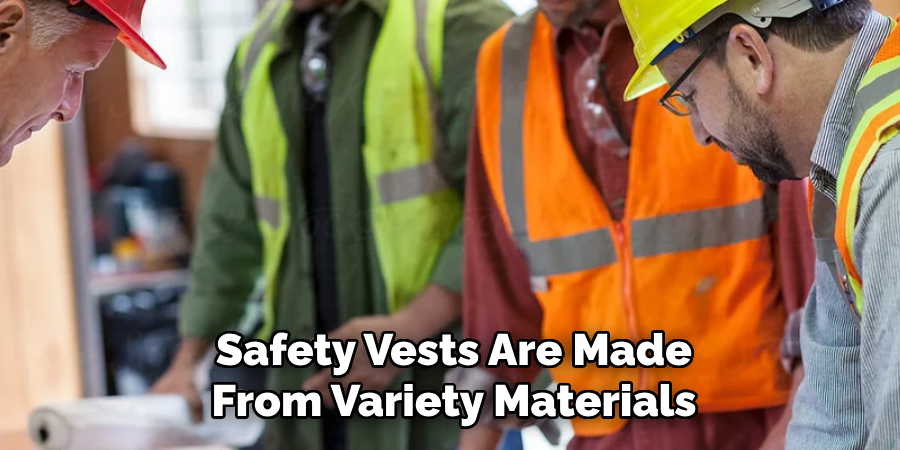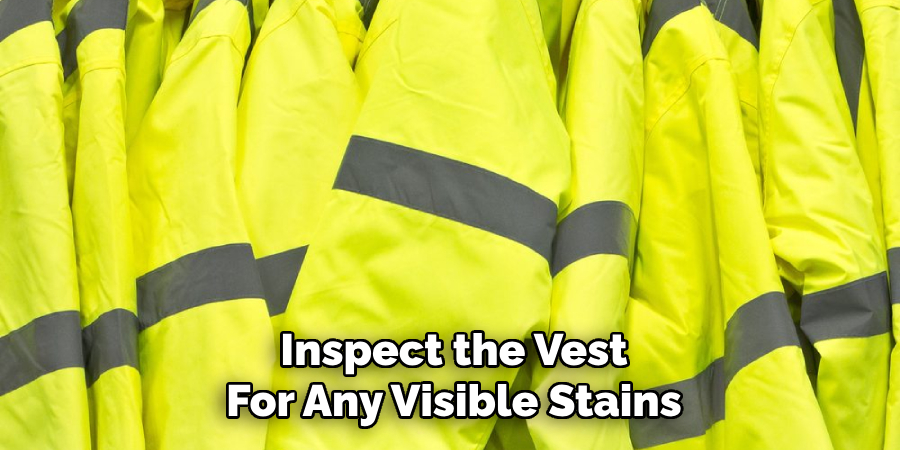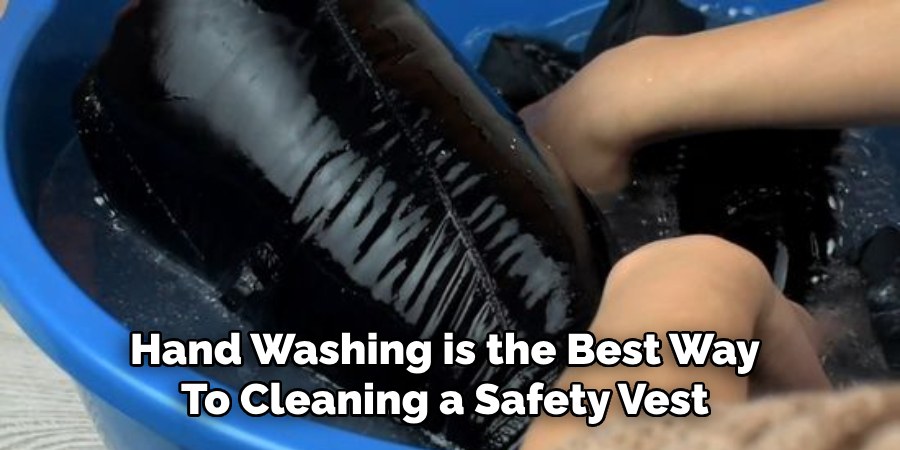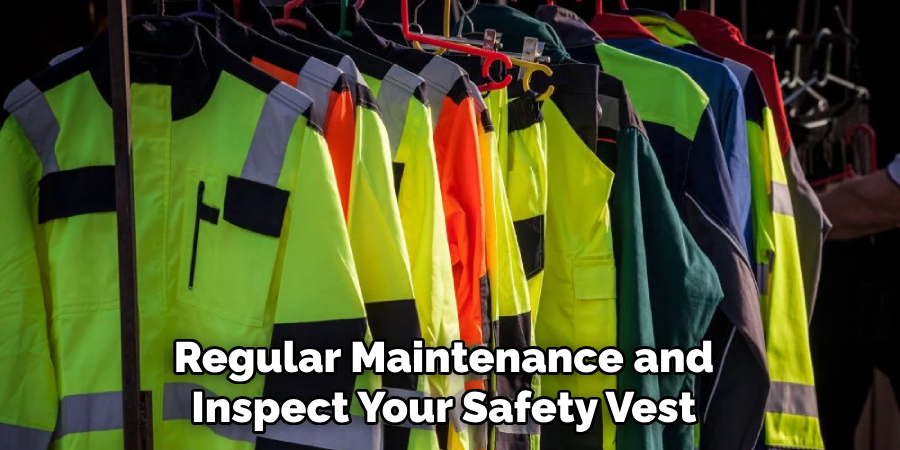Washing a safety vest is essential to maintain its effectiveness and cleanliness, especially after prolonged use in challenging environments. Safety vests are crucial for visibility and protection in various industries like construction, roadwork, and emergency services.

Properly washing a safety vest involves following specific guidelines to preserve its reflective properties and durability. Whether the vest is made from polyester mesh or other high-visibility materials, using mild detergent and cold water is recommended to avoid damaging the fabric or reflective tape.
Understanding the manufacturer’s instructions for washing and drying ensures the vest retains its high-visibility characteristics and meets safety standards after cleaning.
This guide provides essential tips and techniques for how to wash safety vest, promoting longevity and optimal performance in ensuring wearer safety and visibility in hazardous work environments.
Importance of Washing Safety Vests
Regularly washing safety vests is paramount to maintaining their effectiveness and ensuring the safety of the wearer. Safety vests are often exposed to dirt, grease, and other contaminants that can diminish their reflective properties and overall visibility.
A vest that is not adequately visible poses a significant risk, especially in low-light or high-traffic situations. By keeping safety vests clean, workers remain conspicuous to drivers, machinery operators, and other personnel, which helps to prevent accidents and injuries.
Additionally, a clean safety vest fosters a professional appearance, which can reflect positively on both the individual and the organization.
Washing safety vests regularly also helps in identifying any wear and tear promptly, allowing for timely repairs or replacements, thus ensuring continuous protection and compliance with safety regulations.
Understanding Safety Vest Materials
Safety vests are typically made from a variety of materials, each chosen for its specific properties that enhance visibility and durability. The most common materials used include polyester, mesh, and in some cases, cotton.

Polyester is highly favored due to its strength, lightweight nature, and resistance to shrinking and wrinkles, making it ideal for withstanding harsh working conditions.
Mesh materials are often used in safety vests to provide breathability, which is particularly advantageous in hot and humid environments, allowing workers to stay cool while remaining protected.
The reflective tape or material sewn onto the vest is usually made from micro-prismatic or glass bead technology, which significantly improves visibility by reflecting light back towards its source.
Understanding these materials is crucial for proper maintenance, as each has specific care requirements to ensure longevity and consistent performance in keeping the wearer visible and safe.
10 Methods How to Wash Safety Vest
1. Read the Care Label Instructions
Before washing your safety vest, the first and foremost step is to read the care label instructions. The care label provides specific information on how to clean the vest without damaging its reflective properties or fabric.
This label will indicate whether the vest is machine washable, the appropriate water temperature, and any special instructions for drying. By following these guidelines, you ensure the vest’s longevity and maintain its safety features.
Ignoring the care label can lead to damage, reducing the vest’s effectiveness and potentially compromising safety.
2. Pre-Treat Stains
Pre-treating stains on your safety vest is crucial for effective cleaning. Inspect the vest for any visible stains, such as grease, oil, or dirt. Apply a stain remover or a mixture of mild detergent and water directly to the stained areas.
Let it sit for a few minutes to break down the stains. For tougher stains, gently scrub the area with a soft brush or cloth. Pre-treating stains helps to remove stubborn dirt and ensures a more thorough cleaning when you proceed with washing the entire vest.

3. Use a Mild Detergent
Choosing the right detergent is vital for washing a safety vest. Use a mild, non-abrasive detergent that is free from bleach and fabric softeners. Harsh chemicals can damage the reflective strips and the fabric of the vest.
Mild detergents effectively clean the vest without compromising its integrity. Measure the detergent according to the manufacturer’s instructions and avoid using excessive amounts, as this can leave residue on the vest.
Using a mild detergent preserves the vest’s reflective properties and extends its lifespan.
4. Machine Wash with Care
If the care label permits machine washing, place the safety vest in the washing machine on a gentle cycle. Use cold or lukewarm water to prevent damage to the reflective materials.
Wash the vest with similar colors to avoid any color transfer. If possible, place the vest in a mesh laundry bag to protect it from getting caught or snagged during the wash cycle.
Machine washing with care ensures that the vest is cleaned thoroughly while minimizing the risk of damage to its reflective properties and fabric.
5. Hand Wash for Delicate Care
Hand washing is the safest method for cleaning a safety vest, especially if it has delicate reflective materials. Fill a basin or sink with cold or lukewarm water and add a small amount of mild detergent.
Submerge the vest in the water and gently agitate it with your hands to loosen dirt and grime. Pay extra attention to stained areas, gently scrubbing them with a soft cloth or brush.
Rinse the vest thoroughly with clean water to remove all detergent residue. Hand washing provides gentle care, preserving the vest’s functionality and appearance.

6. Avoid Harsh Scrubbing
When washing a safety vest, avoid harsh scrubbing, especially on the reflective strips. Reflective materials can be delicate and prone to damage from excessive friction. Use a soft brush or cloth to gently scrub any stains or dirty areas.
Harsh scrubbing can cause the reflective strips to peel or lose their effectiveness, compromising the vest’s safety features. By using gentle cleaning methods, you ensure that the vest’s reflective properties are maintained, providing optimal visibility and safety.
7. Rinse Thoroughly
Rinsing thoroughly is a crucial step in washing a safety vest. After washing, whether by hand or machine, ensure all detergent residue is completely rinsed out.
Residue can cause irritation to the skin and may affect the reflective properties of the vest. Rinse the vest several times with clean water until no suds are visible. Proper rinsing ensures that the vest is clean and safe to wear, maintaining its effectiveness and comfort.
8. Air Dry for Best Results
Air drying is the preferred method for drying a safety vest. After washing and rinsing, gently squeeze out excess water without wringing or twisting the fabric.
Lay the vest flat on a clean, dry towel or hang it on a clothesline or drying rack. Avoid direct sunlight, as prolonged exposure can cause fading and damage to the reflective strips. Air drying preserves the vest’s shape and integrity, ensuring it remains effective and long-lasting.
9. Avoid Heat Exposure
Heat can severely damage a safety vest, particularly its reflective materials. Avoid using a dryer, ironing, or exposing the vest to high temperatures.
Heat can cause the reflective strips to melt, crack, or peel, reducing their visibility and effectiveness. If you must use a dryer, select the lowest heat setting and remove the vest promptly once it’s dry.
Ideally, allow the vest to air dry naturally to prevent any heat-related damage. Avoiding heat exposure ensures that the vest maintains its reflective properties and durability.
10. Regular Maintenance and Inspection

Regular maintenance and inspection are essential to keep your safety vest in optimal condition. After each wash, inspect the vest for any signs of wear or damage, particularly on the reflective strips and seams.
Check for loose threads, tears, or any areas where the reflective material may be peeling or fading. Address any issues promptly to prevent further damage. Regularly washing and inspecting your safety vest ensures that it remains effective, providing reliable visibility and safety.
Common Mistakes to Avoid
When caring for your safety vest, it’s easy to make mistakes that could compromise its functionality and lifespan. Here are some common mistakes to avoid:
Using Harsh Chemicals
Avoid using bleaches, fabric softeners, or any abrasive detergents on your safety vest. Harsh chemicals can degrade the reflective materials and fabric, reducing their effectiveness.
Ignoring the Care Label
Always follow the care instructions provided on the vest’s label. Ignoring these guidelines can lead to improper cleaning methods that damage the vest’s materials and reduce its lifespan.
Overloading the Washing Machine
Placing your safety vest in an overloaded washing machine increases the risk of it getting snagged or stretched. Always wash the vest with similar items and avoid overcrowding.
Ironing Over Reflective Strips
Never iron directly over reflective strips as the heat can melt or damage them. If ironing is necessary, ensure you avoid the reflective areas or use a low heat setting and a protective cloth.
Conclusion
In conclusion, washing a safety vest involves a series of careful steps to ensure it remains functional and effective. Start by reading the care label instructions and pre-treating any stains.Use a mild detergent and choose between machine washing or hand washing, depending on the vest’s material and care instructions. Avoid harsh scrubbing, rinse thoroughly, and air dry the vest to maintain its integrity.
Steer clear of heat exposure, which can damage the reflective properties. Thanks for reading, and we hope this has given you some inspiration on how to wash safety vest!

